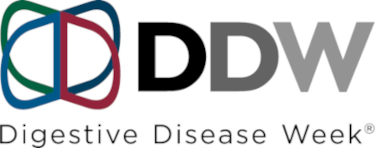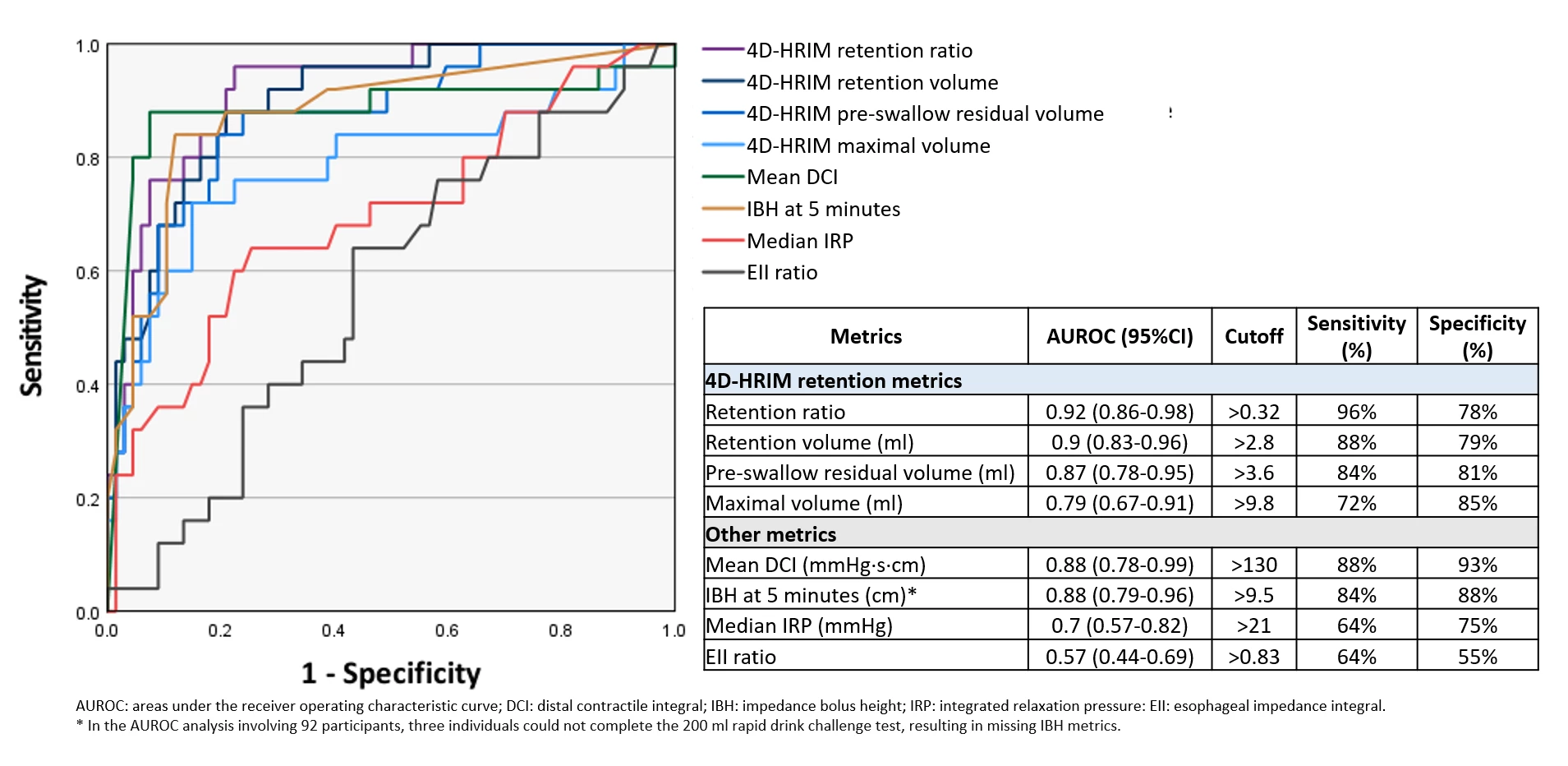Background:
The objective measurement for esophageal bolus volume will classify abnormal high-resolution manometry (HRM) beyond the current Chicago classification. We aimed to compare the novel four-dimensional impedance manometry (4D-HRIM) retention metrics with emptying on timed barium esophagogram (TBE) and previously described impedance metrics: impedance bolus height (IBH) at 5 minutes and esophageal impedance integral (EII) ratio.
Methods:
Consecutive adults with esophageal symptoms undergoing HRIM and TBE were included, excluding those with mechanical obstruction or prior foregut surgery. A Python program was custom-built for 4D-HRIM analysis. After extracting the initial five supine 5 ml swallows, manual landmarks identified esophageal bolus transit. Using bolus properties, Ohm’s law and mass conservation, the esophageal luminal cross-sectional area (CSA) and diameter were derived from impedance data and landmarks. Subsequently, the time history of bolus volume was computed by integrating the bolus CSAs within the esophagus. 4D-HRIM retention metrics included pre-swallow residual volume (median of bolus volume at 2 seconds before swallow onset), maximal volume (maximal value from swallow onset to the completion of the bolus transit), retention volume (median of bolus volume at 2 seconds before the end of the 15-second swallow frame) and retention ratio (retention volume divided by maximal volume). Data were presented as the median of the five swallows. An abnormal TBE was defined as a column height >5 cm at 1 minute or 5 minutes.
Results:
A total of 95 subjects (normal: 33%; ineffective esophageal motility: 12%; absent contractility: 9%; esophagogastric junction outflow obstruction: 29%; type I achalasia: 5%; type II achalasia: 12%) were categorized into normal TBE (57%), abnormal TBE at 1 minute (16%) and abnormal TBE at 5 minutes (27%). All 4D-HRIM retention metrics showed significant differences between the normal TBE vs. abnormal TBE in the 5-minute group (p<0.001) and abnormal TBE in the 1-minute vs. 5-minute group (p<0.05) (figure 1). The AUROC demonstrated that the 4D-HRIM retention ratio had the best performance in predicting abnormal TBE at 5 minutes (AUROC, 95% confident interval: 0.92, 0.86-0.98) among all 4D-HRIM retention metrics and better performance compared to mean distal contractile integral (0.88, 0.78-0.99), IBH (0.88, 0.79-0.96), median integrated relaxation pressure (0.7, 0.57-0.82) and EII ratio (0.57, 0.44-0.69) (figure2). The cut-off value of 0.32 for retention ratios had a sensitivity of 96% and specificity of 78% for predicting abnormal TBE at 5 minutes.
Conclusion:
Novel 4D-HRIM retention metrics provide objective measurement of retained esophageal bolus volume and were associated with bolus retention in TBE. Incorporating 4D-HRIM retention metrics in HRM might aid in classifying patients with inconclusive HRM.

Comparison among 4D-HRIM retention metrics between normal and abnormal timed barium esophagogram at 1 and 5 minutes.
The area under the receiver operating curve among 4D-HRIM retention metrics, mean distal contractile integral, impedance bolus height (IBH) at 5 minutes, median integrated relaxation pressure and esophageal impedance integral (EII) ratio for predicting abnormal timed barium esophagogram (TBE) at 5 minutes.




